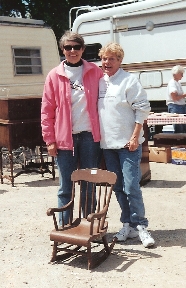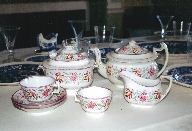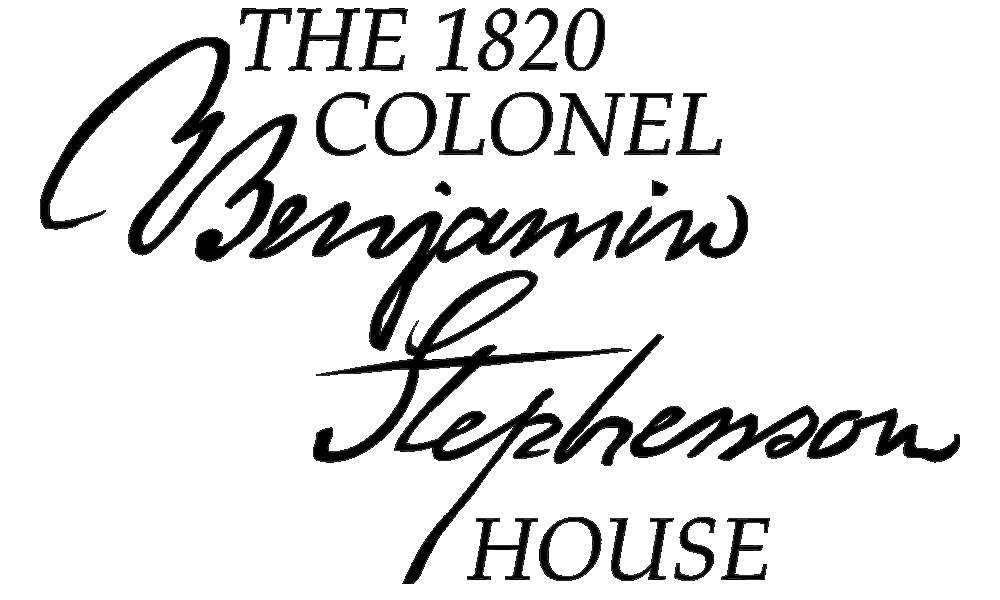Acquisitions
Furnishing the Stephenson House
Unlike some historic homes, none of the original furniture remained in the Stephenson House when it was acquired by the city. Further, none of the surviving relatives of the Stephensons had any information indicating that original furniture survived. Unfortunately, this is a common problem with many early restored homes. Consequently, such homes are frequently restored with “representative” pieces that are “the kinds of things which might have been found in a house of this period and social status.”
 The Stephenson House differs because there was a list of all of the items in the house in 1822. Since Benjamin Stephenson died without a will, his estate was subject to the probate process. As part of the process, the executors compiled a list of all personal property. The list includes all items in the house at the time of his death. The personal property inventory is confirmed by two further lists. The executors developed a second list that included an appraised value for every item on the original inventory. Finally, the items on the inventory were sold at public auction to help settle Stephenson’s debts. Not only were all items on the inventory re-listed in the auction list, but the auction list also provides information on the purchase price and the purchaser. The Stephenson House differs because there was a list of all of the items in the house in 1822. Since Benjamin Stephenson died without a will, his estate was subject to the probate process. As part of the process, the executors compiled a list of all personal property. The list includes all items in the house at the time of his death. The personal property inventory is confirmed by two further lists. The executors developed a second list that included an appraised value for every item on the original inventory. Finally, the items on the inventory were sold at public auction to help settle Stephenson’s debts. Not only were all items on the inventory re-listed in the auction list, but the auction list also provides information on the purchase price and the purchaser.
Furnishing decisions were based upon several simple principles. First, purchases would be guided by the inventory list. Second, emphasis would be placed upon the acquisition of period appropriate antiques representative of the original items on the inventory. Third, the furnishings should be appropriate to a “user friendly atmosphere.” Although the purchase of period antiques was contemplated, the decision was to acquire quality antiques which could be used and touched by visitors. An additional decision was to purchase high quality reproductions of items that would receive constant use. For example, the inventory lists 17 Windsor chairs and a child’s Windsor chair. Since the chairs would be subject to considerable use by visitors, high quality reproduction Windsor chairs were purchased. Likewise, reproduction Dutch ovens and candle molds were purchased since frequent cooking and candle making demonstrations are part of the interpretive program.
 The information on the inventory list was supplemented with information acquired from archaeological investigations of the privy and investigations along the north wall of the house where the original kitchen stood. The excavations yielded more than 26,000 items. Most important for the furnishing plan was the fact that a large number of broken pieces of ceramics was recovered. The inventory suggested that Lucy Stephenson had an 18 place setting of China and an additional eight dozen plates. The earliest ceramics recovered archaeologically included hand painted Staffordshire and blue and green feather edge pearl ware. These early types of dishes probably were the dishes which had served the family during their earlier life in Kentucky and Kaskaskia. These early types were replaced by blue transfer wares which became common in the early 1800s and become the most common wares at the house. The information on the inventory list was supplemented with information acquired from archaeological investigations of the privy and investigations along the north wall of the house where the original kitchen stood. The excavations yielded more than 26,000 items. Most important for the furnishing plan was the fact that a large number of broken pieces of ceramics was recovered. The inventory suggested that Lucy Stephenson had an 18 place setting of China and an additional eight dozen plates. The earliest ceramics recovered archaeologically included hand painted Staffordshire and blue and green feather edge pearl ware. These early types of dishes probably were the dishes which had served the family during their earlier life in Kentucky and Kaskaskia. These early types were replaced by blue transfer wares which became common in the early 1800s and become the most common wares at the house.
The Acquisitions Committee suggested a budget of $70,000 to cover the purchase of furnishings which could not be acquired by donation. The suggested budget did not include the purchase of two Ingrain Carpets estimated at about $12,000. The total cost of furnishings exceeded the original estimates.
|



